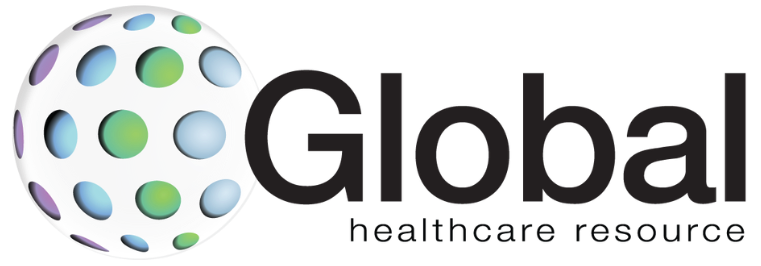
Integrated delivery networks (IDNs) provide healthcare across the continuum for a geographic region. Typically, they include hospitals and provider networks and may include skilled nursing or long-term rehab facilities, specialty clinics, and home health services. Usually, but not always, the health system supports a self-insured health insurance plan. Kaiser Permanente, Geisinger, and Intermountain Health are just a few of the more well-known IDNs.
All healthcare providers and hospitals, including those that are part of IDNs, are facing increased financial pressure to deliver measurable, high-quality care to patients, by reducing preventable hospital readmissions or post-surgical infections, for example. For fiscal year 2017, CMS is reducing reimbursements for more than 2,500 hospitals due to higher than expected readmissions within 30 days of discharge for six conditions and for 769 hospitals with the highest rates of hospital-acquired infections . But IDNs, particularly those with self-insured health plans, are uniquely positioned to reap the financial benefits of initiatives that rely heavily on remote patient monitoring and telehealth to keep patients out of the hospital and in better health.
In vitro diagnostics (IVDs) can play a substantial role in these endeavors. IVDs are medical devices, which include reagents, instruments, and assays used to analyze human samples. They can be used to diagnose a disease, predict disease progression, or select therapy. IVDs range in complexity from simple blood test to check cholesterol levels to whole genome sequencing used to identify the underlying genetic cause of a disorder.
For example, Geisinger Health found telemonitoring elderly patients having heart failure significantly reduced 30-day and 60-day readmission rates and reduced cost of care. Medical device manufacturer St. Jude Medical (now Abbott) realized lower patient medical costs and fewer hospitalizations for patients with cardiac devices who used remote monitoring devices at home. At-home blood glucose monitors can help patients determine the right dose of insulin to take, then send the data to the provider or can be integrated with the health system’s EHR, giving doctors a better understanding of the patient’s control of their disease, are being adopted more frequently, with the expectation that insights gleaned from these devices will improve patient outcomes and reduce healthcare costs.
A report by Zion Research predicts increased global demand for home healthcare services will grow at a CAGR of 9.40 percent between 2016 and 2021, exceeding a market value of $391 billion by 2021. Diagnostics equipment, including IVDs, account for more than one-third of the overall home healthcare equipment market, and that share is expected to grow due to increasing prevalence of cardiovascular diseases, pulmonary disorders, and diabetes, according to analysts.
How can IVD manufacturers take advantage of this market growth potential? As IDNs (and other health systems) look to expand telemedicine and remote patient monitoring to keep patients recuperating at home, IVD manufacturers should be ready to step in with new devices designed for at-home use that can work with both emerging digital health solutions and existing health system EHRs. Data that can show the added value of these devices, such as per-patient cost savings, reduction in hospitalizations or readmissions, or improved patient outcomes, will be essential to differentiate between devices. Manufacturers will need to plan for studies that capture that data early in the design and development phases and should work with IDNs on pilot studies that can be scaled as needed.
The financial pressures facing IDNs and other health systems will continue to mount in the coming years. Self-insured IDNs, however, may be more willing to seek innovative solutions to reducing costs and improving patient outcomes. Increasingly, those opportunities will include a component of telemedicine and/or remote patient monitoring, which will rely substantially on IVDs. The IVD industry should consider how they can meet the growing needs of patients and providers with new devices and the corresponding data that show their value.
Photo: D3Damon, Getty Images
Harry is the author of two related books: Commercializing Novel IVD’s; A Comprehensive Manual for Success and MoneyBall Medicine: Thriving in the New Data-Driven Healthcare Market.
Harry Glorikian is an influential global business expert with more than three decades of experience building successful ventures in North America, Europe, Asia and the rest of the world. Harry is well known for achievements in life sciences, healthcare, diagnostics, healthcare IT and the convergence of these areas. He is a sought-after speaker, frequently quoted in the media, and regularly asked to assess, influence, and be part of innovative concepts and trends.
He is currently a General Partner at New Ventures Funds (NV). Before joining NV Funds, he served as an Entrepreneur In Residence to GE Ventures – New Business Creation Group. He currently serves on the board of GeneNews Ltd. He also serves on the advisory board of Evidation Health (a digital health startup launched with support from GE Ventures), and several other companies. He is also a co-founder and an advisory board member of DrawBridge Health (a revolutionary diagnostics startup launched with support from GE Ventures).
Harry holds an MBA from Boston University and a bachelor's degree from San Francisco State University. Harry has addressed the NIH, Molecular Medicine Tri-Conference, World Theranostics Congress and other audiences, worldwide. He has authored numerous articles, appeared on CBS Evening News and been quoted regularly by Dow Jones, The Boston Globe, Los Angeles Times, London Independent, Medical Device Daily, Science Magazine, Genetic Engineering News and many others.
This post appears through the MedCity Influencers program. Anyone can publish their perspective on business and innovation in healthcare on MedCity News through MedCity Influencers. Click here to find out how.










